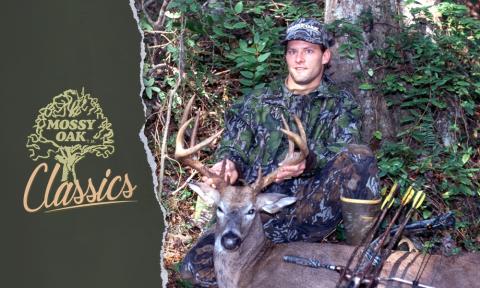Chris Bridges
The rich mosaic of ridgetops, rolling hills and bottomlands of North American forests provide a wide range of different habitat types for wildlife. While it is easy to generalize the major forest types by region, recent work from a number of different researchers has helped to illuminate the subtle influences of topography, soil, fire and other disturbance regimes on forest and grassland ecology. In recent years, greater appreciation has been afforded to prairie remnants for upland game birds and other grassland species. Similarly, greater attention is now being placed on other less forested habitats such as savannas and woodlands. Savannas are often overlooked components of North American forests that can be effectively managed to improve wildlife habitat and hunting opportunities through careful planning for the right combination of trees, grasses, forbs and disturbance regime.
DEFINING SAVANNAS AND WOODLANDS

Many of us were taught to refer to regional habitat ‘climaxes,’ suggesting that in the absence of disturbance such as fire or harvest, the forest ecosystems in one area were destined to reach a state of dominance by relatively few tree species. Examples include oak-hickory forests in the midsouth or beech-birch-maple in the northeast. Both experienced land managers and students of forest ecosystems have come to realize over the past several decades that forest landscapes are complex ecosystems and the interactions of fire, insects, disease, wind, flooding and other disturbance patterns complicate generalizations of forest types. Similarly, greater appreciation for the diverse habitat needs of different species has contributed to increased appreciation for open-canopy components of forest ecosystems.
Although the word savanna may stir in many of us images of a safari on another continent, the term is also appropriately and increasingly used to describe grasslands with scattered trees in a variety of different landscapes. The distinguishing feature of savannas is that tree canopy is sufficiently limited to encourage light penetration to the majority of the land which typically encourages prairie and grassland vegetation across the majority of the site. In North American savannas, this usually includes the major prairie grasses such as big bluestem, indiangrass, switchgrass along with forbs and many other plants. Notable open-canopy ecosystems of the South include longleaf pine savannas of lower Georgia, Florida and Alabama; as well as oak savannas of the upper Midsouth.
The term woodland has traditionally been used to refer to a number of different forest types. However, an extension publication by the Burger, Keyser and Vander Yacht (2016) on the ecology and management of oak savannas and woodlands does an excellent job of distinguishing between these habitat types. Most importantly, savannas are described as habitats in which canopy cover is between ten and thirty percent, while woodlands are those environments in which canopy cover exceeds thirty percent but is less than eighty percent. Sites in which canopy cover exceeds eighty percent are appropriately categorized as forests. Another feature that distinguishes savannas, woodlands and forests is the dominance of herbaceous vegetation in savannas and woodlands but not in closed-canopy forested sites.
APPROACHES FOR HABITAT MANAGEMENT
While the unique features of each of these habitats is interesting from a biological perspective relative to the types of game and nongame species that each supports, it is likely more important for land managers to understand the characteristics of savannas so that they can be effectively managed for desired wildlife species. Given that many of us have likely grouped savannas and woodlands with larger forested habitats in the past, a more careful evaluation of canopy coverage across a property is helpful for me to understand both the potential of the site and the existing conditions that I am dealing with regarding both desirable vegetation and competition control.
Professional foresters and wildlife biologists often use a tool called a densiometer to accurately quantify canopy coverage on a site. However, many online platforms and mobile applications will allow similar estimations to be made across the site. I have been surprised by the variation of canopy coverage on forested sites even in the Midsouth. Some of this can be explained by flooding patterns and sediment deposition in bottomlands and some can be explained by shallow soils on upland sites. The influence of livestock grazing in fenced woodlots and by mowing patterns in sparsely forested fields must also be considered.
Read More: Ecology and Management of the Post Oak
Perhaps most importantly, the role of fire in managing understory vegetation must be taken into account for successful savanna habitat improvement. While appropriate care must be given to prescribed fire planning, management and safety, periodic burning plays a major role in savanna ecosystems. Grazing livestock, mowing, and herbicides can be effectively used to manage competition in some environments. The retention or planting of appropriate tree species must be central for any savanna habitat project. Identification of dominant oak species and other mast-producers is important to maximize savanna value for wildlife species. Although the wide-branching growth form of many open-grown post oaks or white oaks grown in savannas are not ideal for timber production, selection or planting of appropriate tree species in combination with native grasses can result in productive savanna habitats that serve a wide range of forest and grassland species.
References:
Burger, Gary & Keyser, Patrick & Vander Yacht, Andrew. (2016). Ecology and Management of Oak Woodlands and Savannahs. Available at: https://utia.tennessee.edu/publications/wp-content/uploads/sites/269/2023/10/PB1812.pdf































